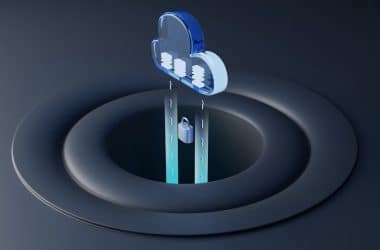When I first started learning electromagnetism, I was so fascinated by the fact that simply wrapping wire around a piece of metal was all it took to create a magnet. Unfortunately, some of the simplest devices have a complicated design process in which apparent nuances could dramatically impact their behaviour. These little details are a big issue, and I could hardly find any tutorials to explain them when I scoured the Internet. Keen observation helped me to learn these little details and finally enabled me to create strong electromagnets.
A Brief Primer
Electromagnets generate a magnetic field when electric current is passed through them. These magnets consume power, unlike permanent magnets, but they are indispensable for multiple reasons.
- One reason they are so important is: They can be switched on or off as needed, enabling electric motors to easily reverse their magnetic fields with each revolution, which is required for their operation. Permanent magnets are not adjustable, so electric motors can’t rely on them exclusively.
- They are controllable. The ‘pull force’, magnetic pull, or ‘strength’ of an electromagnet can be adjusted, unlike that of permanent magnets. This is essential to electric motors which need to control their magnetic fields.
Why Magnet Wire Length Is So Important
You may have already learned that the longer a wire is, the greater its resistance is. Longer magnet wire has a greater inductance and a greater resistance as well. If you connect a little 10 foot piece of magnet wire to a 12-volt battery, it will burn itself out. Why? That is equivalent to a short-circuit. The resistance of that wire is so low that it draws a massive amount of current from the battery which is far more than it can handle. The length of wire required depends on the project, but longer magnet wire tends to result in a stronger electromagnet.
Why Magnet Wire Thickness Is So Important
Thicker magnet wire of a given length has a lower inductance and a lower resistance. This causes thicker wires to draw more electric current. Using an excessively thick reel of magnet wire to build your electromagnet is not the solution to overheating because it will draw more electric current. If it is too thick, it could cause overheating. You need to calculate the exact thickness that your project requires.
Differences Between Enameled Wire/Magnet Wire And Regular Wire
- The rules of current-carrying capacity for regular wire (without an enamel) cannot be applied to electromagnets as they are. You can use significantly oversized (in this case, thicker than necessary) wire for appliance power cords without any consequences (apart from a higher price tag). However, oversizing magnet wire can completely throw off a project’s behaviour and even cause it to fail.
- Enamel is a form of electrical insulation, but it serves a different purpose from the black, white, green, red insulation on (and in) your appliance power cords.
What Burns Out Electric Motor Coils?
- Overloading due to excessive friction in the bearings or other mechanical parts turned by the motor. This resistance will cause the motor to draw an excessive amount of current, resulting in overheating. This can happen if motor oil deteriorates.
- Overloading due to an oversized load (an oversized load could simply be too heavy, it could be an oversized fan blade, or many other things).
- Overheating due to abnormally high ambient temperatures.
Magnet wire is coated with enamel, which is often transparent, but sometimes red or green. This thin layer of plastic enable prevents the overlapping windings of wire from coming into contact with each other. This plastic has a temperature limitation which usually ranges from 100 °C to 130 °C.
Overheating due to excessive current or an abnormally high ambient temperature causes this enamel to melt off, resulting in arcing between the windings, which short circuits the coil, resulting in massive overcurrent that burns out the coil.
This also explains what burns out speaker coils, what burns out generator coils, and what burns out all other electromagnet coils.




